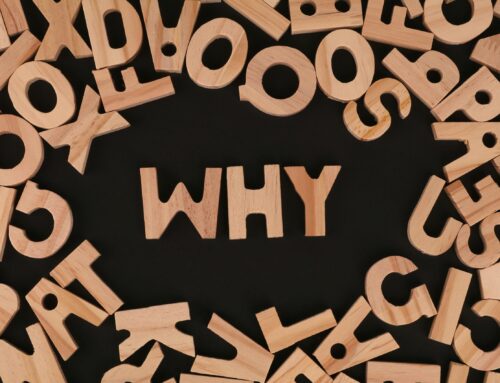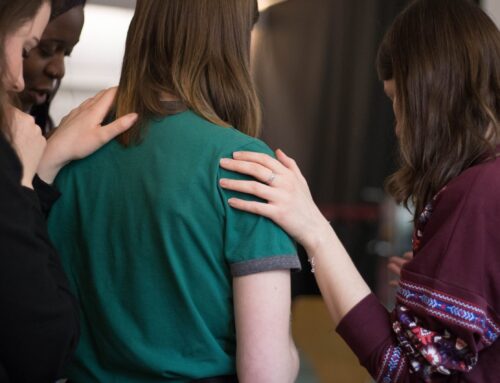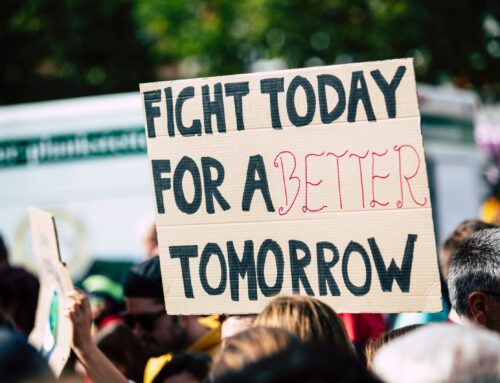 In her remarkable memoir of her childhood, Brown Girl Dreaming, Jacqueline Woodson writes, “How can I explain to anyone that stories are like air to me; I breathe them in and let them out over and over again.” Stories — hers, yours, mine — are a kind of empathic breathing with which we sustain our lives, families, communities, cultures.
In her remarkable memoir of her childhood, Brown Girl Dreaming, Jacqueline Woodson writes, “How can I explain to anyone that stories are like air to me; I breathe them in and let them out over and over again.” Stories — hers, yours, mine — are a kind of empathic breathing with which we sustain our lives, families, communities, cultures.
Breathe.
In my family’s religious tradition, there was something called a “sermon text,” the form (but not the content) of which I’m going to imitate in this article. We were Episcopalians (that was, after all, the “state religion” of Virginia, where I grew up — popular because it didn’t get much in your way, actually, and it had more questions than answers — and because it was polite and pretty). Polite and pretty mattered a lot in Virginia back then; neither one applies so much today.
The sermon text was supposed to say, in a few words (usually, verses from one or the other testament of the Bible), what the sermon would be about.
This is no sermon, and the text I’ll use to say what my talk will be about is not biblical. It is an invocation, though; it asks the most important question we’ll ever be asked. It’s a story, in the form of a poem — a moment of particular power and magic from Mary Oliver, a sturdy New England poet who lived for decades where I live now, in Provincetown, MA — at the end of the world, surrounded by the Atlantic Ocean and Cape Cod Bay, about as far east as you can go and still be in the US.
The invocation comes in her poem, “Sunny Day.”
Tell me, what is it you plan to do
with your one wild and precious life?
There is the question — not just a question, but the question: what is it you plan to do with your one wild and precious life? What will be the story of you? You, the person; you, in all your identities, known and unknown, acknowledged and mysterious, obvious and occult, apparent and emerging, predictable and surprising.
And that is the question, not just a question, for every student too. It’s a question we should be asking them, each other, and ourselves, in one way or another, over and over again. Answering it, though everyone does so tentatively, is the very essence, the core, the beating heart of the work we do with students. And with ourselves.
We’ll come back to that, at the end; it is, after all, the sermon text. Hold the thought. Here we go. In a few seconds, I’ll share with you an important passage about the Big Easy, the Crescent City, New Orleans. Have you been there?
Andrei Codrescu, who loves and lives in New Orleans, is a frequent NPR commentator, a prolific author and scholar, whose Romanian heritage has defined much of his life. But in this paragraph he is talking about New Orleans, and its truly profound differences from the rest of America — or could he actually be talking about us, in Student Affairs, and what may seem like our equally profound differences from the rest of the academy? He writes:
“The nature of New Orleans is to encourage the optimum development of New Orleanians; it’s an environment for a specific life-form, a dreamy, lazy, sentimental musical one, prey to hallucinations (not visions), tolerant, indolent, and gifted at story telling. This goes against the very grain of American civilization as we know it. We live incongruously in the way of the thrifty, Puritan American whose concerns, including environmental ones, are driven by the logic of economies and planning. We, and our ways, are marked for elimination; there is no room in an efficient future for what we embody. This is a city of night, fog, and mud, the three elements against which all the might of America is mobilized.”
We, too, live in a world of people — students, us — who are always in process; a learning laboratory, a developmental space, and inevitably therefore a region of night, fog, mud. Things are messy; they are changing unpredictably, hourly, in a twist of the story. Minds, brains, bodies, identities, all in creation.
Think about Codrescu’s paragraph: a story about New Orleans about the messy, deeply human stuff. Our story is messy, too. Is there room in the efficient, disruptive, innovative, quantitatively hungry future of higher education for the messy world of Student Affairs? We’re anything but lazy and indolent — but Student Affairs is by nature (and/or nurture) tolerant, and, as this conference proves, gifted at story-telling. In the continuing crucible of student and professional development that we inhabit, and whose flames we intentionally fan, we work in a dreamy, sentimental space, where stories are told in music, art, and wonder.
Feel that wonder for a moment.
Maybe wonder is the most important of those things — we work in that space, which is a sphere of uncertainty, ambiguity, and fog, where things slowly come — or don’t come — into focus. When I worked at the University of Wisconsin-Madison, I imagined both students’ development, and my own personal and professional development, as occurring in unsettled weather with poor visibility — like the lake effect snow squalls that would churn up white mysteries, and we’d have to wait until the mist and swirling flakes cleared to see where we were.
Student development, our own personal and professional development, all development, everything that is about becoming a person, an emerging human being, is unclear until it’s more clear, whenever that is. When I was in medical school in Boston, it was common for medical students to refer to themselves as being a thalamus with legs — a brainstem on feet — since there was so little time to be, or become, anything else.
I remain incomplete. So do you. No longer a thalamus with legs, perhaps, but unfinished business nonetheless. We — you and I, all of you and I, all of us — are works in progress. We are, to use the words of Mary Catherine Bateson, “composing a life.” Notice the phrase: “composing,” not defining, building, mapping out, structuring, measuring, documenting, proving, or showing off — but composing. Bateson, now in her late 70s, is cultural anthropologist, the daughter of Margaret Mead.
Bateson characterized life as improvisation — hence, “composing a life” is a stand-up process that goes on every day. Like our days. We improvise, we pull it together, and, at the end of the proverbial day, we are always a little different. It’s anything but linear. Just like our stories. But notice, too, how the phrase “composing” a life sets us to music, frames us as art, sees us as sculpture hidden in some block of marble.
Imagine: every student has a musical score, every student is sketching, drawing, painting themselves, every student is a statue being discovered within a block of marble. Imagine again: so are you. You are busy with your song, your symphony, your toccata and fugue; your brush or palette knife is always in your hands; your chisel is chipping away as some part of you comes more clearly into view. We grow into our pronouns as we grow into our bodies.
Composing is work. It doesn’t just happen. It is an active, energy-dependent process. It is dreamy and sentimental, musical and empathic, complex and spiritual, and it occurs in the fog, the snow squall, the dust storm — and who you are begins to be more definitively visible in the marble, as the melody becomes familiar.
The work is also hard. Composing a life is anything but lazy and indolent; that it is not quantitative and easily measurable does not mean it is not rigorous. There is nothing more important our students will do. There is nothing more important you will do. There is nothing more important that I am doing. We are composing.
There are a lot of ways to tell your story. Bob Dylan, just awarded the Nobel Prize in literature, told his story — told the stories of many of us, in fact, in the 1960s and 1970s, and, now, it seems, again — in lyrics; his poetry became his songs. The people whose music we hear, hum, share, dance to engage us in their stories and offer gifts — little realizations, reflections, “yes” moments — that enable us to begin to hear our own music.
Let me tell you a little about mine. Breathe.
I was a dorky, nerdy, introverted undergraduate, eternally fascinated by real people. I was like one of the characters in Henry James’ novels (can you tell I was an English major?) — so dry that a heap of them, if hit by a spark, would burst into flame. I wasn’t so much afraid of spontaneous combustion as fearful that I wouldn’t light at all. But I digress. Again.
Had you asked me to tell you my story at 18 or 19 you would have gotten “um,” followed by some recitation of various family dramas and tragedies, of which there was no shortage, but nothing about myself — because I had no idea what that was (myself). And yet. I would have been able to tell you what I could do — run fast, play the piano (and the pipe organ, for heaven’s sake) — but not who I was. Biography would dominate; there would be no composition in evidence.
So it was that in my senior year in college, at the University of Virginia — I was in an English honors program, and my thing was British romantic poetry (perhaps because it seemed so much more alive than I was); my particular thing, or sub-thing, was William Blake, who in 1793-94, in the setting of the world set on fire (the French revolution), morphed from a silly non-controversial, inconsequential poet into a powerful, emotional, fierce one.
Maybe I hoped to become a powerful, emotional, fierce person too. I might have been justly accused of being silly and inconsequential; I hadn’t started Mary Oliver’s journey yet.
I was doing my honors thesis on Blake, and my focus was on his most incendiary and extraordinary poem, “The Tyger.” Like Mary Oliver, he asked a fundamental question; it appears in the poem in three or four forms, all of them theological, existential, and terrifying.
Looking at this apex predator, the tiger — a fierce, wild, untamed creature (although it is usually said of lions, you might also say a tiger does not concern himself with the opinions of the sheep) — Blake, previously very concerned about sheep (he wrote an earlier poem called “The Lamb”), asks, “Did he who made the lamb make thee?” Hold that thought.
Back for a minute to the inconsequential (pre-journey, pre-conscious of self) version of me. The poem, and Blake, and his intellectual and spiritual connections to Goethe in Germany, a mystic in Sweden (Swedenborg), and illustrators and print-makers in England and elsewhere bent my mind somehow.
The poem had everything I didn’t have — rhythm, power, passion. It pounded in my head. But, as a fourth year student at the University (we were not freshmen, sophomores, juniors, seniors; we were first year, etc.; and we were not “UVA,” we were “the University”), writing an honors thesis with an advisor who was both Chair of the Department of English and a distinguished Blake scholar in his own right, I was overwhelmed.
Worse, I was stuck.
Or to persist on our own. We must let no one steal our brush, stamp on our canvas, run off with our chisel — or, worse, take their chisel to our marble. We must not leave our story — as educators, administrators, or developing human beings — untold. Maya Angelou: “There is no greater agony than bearing an untold story inside you.”
As ethical practitioners and educators, we must leave no student’s confusion to themselves; we work, and work hard, in the foggy, dark, uncertain places in which students, and we, discover ourselves, academic credit or no, tenure or no, quantifiable results or no.
Ordinarily, the application of the sermon text is that it reappears briefly in the closure of the sermon — a reminder, a restatement, a kind of “booster.” Here, I violate the form; I take us back to Mary Oliver, but to a different poem. Arguably her masterpiece; likely one of the best poems in English; something to share with every student. I struggle, every time, to get through it without losing it. If I lose it with you, I’m among friends. Feel free to lose it with me.
I told Don Hirsch, my advisor, the Chair, the scholar, that I was stuck. By the way: notice the statue of Homer, which sits on the University’s lawn. Don Hirsch, after dealing with me, went on to write books about cultural literacy; People magazine sent a reporter to Charlottesville to interview him. The reporter called back later and asked him who the statue was of; Hirsch said, “Homer,” and the reporter asked, “Homer who,” which validated the need for the books.
Back to Hirsch and me, in his office. He said, “The trouble with you, Keeling, is…” (I was desperately excited; I had always wanted the answer to that question) “…that you’re not engaged.” First, I was practical: “How then do I get engaged?” He said: “Get un-stuck.” I said, “How do I get un-stuck,” and he said, “Get engaged.” This conversation at cross-purposes continued briefly, during which time I became less practical and more emotional — angry, in fact. I had spent hours, hours, days on Blake, reading every critique, every bit of biographical detail, all the analyses of his poetry. I had looked at illuminated manuscripts, found a translation of Swedenborg, and learned a little German, so I could fathom Goethe.
Not engaged, indeed. I went from angry to insulted in a flash. Professor Hirsch, meanwhile, went from frustrating to frustrated, threw up his hands, leaned back too far in his chair, and almost fell on the floor, still talking. “Keeling,” he said, “You haven’t felt the poem, you haven’t owned it, you haven’t made it part of you.” I stared at the floor and asked, “How do I do that?” Restoring himself to the vertical position, he said, “Go say the poem. Say it until it lives in you, owns you, you feel it.”
Remember Jacqueline Woodson: “breathe it in, breathe it out.”
Off to the “dell,” a small park (once used, for, um, “informal student development activities” at night, by enterprising undergraduates) now gone, redeveloped, repurposed) behind the first year residence halls, in a spring drizzle. I walked, whispered, said, and eventually yelled that poem, eventually loud enough that the guy who had been my first year RA happened by and asked me if I was OK. Hours, miles, probably. But that poem moved in — it now lives with me, and I’ve spent years exploring the answer to its questions.
Say the poem, he said. And I did, and I will.
That fifth stanza — magnificent; the meter of the poem, incredible. Tyger, tyger, burning bright. It was a moment like Mary Oliver’s, for me — I suddenly knew what I had to do — I saw (or was it felt?) some shape in the marble, a dream, a vision, a shadow, of something that might be me, becoming. I was 21.
I began to hear my song.
Four decades later, it’s (I’m) still a work in progress. Always becoming. I’m no poet, but Blake, Oliver, Emily Dickinson, Maya Angelou, many others have written their words on my soul, and, in the glory of their art, I’ve been able to figure me, or some of me, out. Bob Dylan, Jim Croce, Ella Fitzgerald, Alberta Hunter, even Cher — yes, “Gypsies, Tramps, and Thieves” — and Connie Francis (“Where the Boys Are”), Don McLean (“American Pie”). Of course, Judy Garland (“Somewhere, over the rainbow..”).
Every student, and all of us, will find our own pathways, channels, mentors, reasons. This morning I am making a case for poetry, music, and art as a way to know, and tell, your story.
Indeed. Adrienne Rich, who died in 2012, was an esteemed public intellectual and a sharply politically minded, proudly feminist poet. Of poetry — her work, her passion, her craft — she said, “Poetry is above all a concentration of the power of language, which is the power of our ultimate relationship to everything in the universe.”
Without that — an understanding of our ultimate relationship to everything in the universe — we would be, actually, impoverished; as Williams, would have it, we might die miserably for lack of what is found there. Because we are not made up of the news; influenced by it, determining some of it, but it is not us.
We might rewrite Williams, as Student Affairs professionals, to say, “It is difficult to get academic credit from student life and development, but students fail every day for lack of what is found there.”
Let your mind run back to New Orleans, and the dark, the fog, the magic of student development.
The charge: not to leave students’ confusion to themselves.
Or to persist on our own. We must let no one steal our brush, stamp on our canvas, run off with our chisel — or, worse, take their chisel to our marble. We must not leave our story — as educators, administrators, or developing human beings — untold. Maya Angelou: “There is no greater agony than bearing an untold story inside you.”
As ethical practitioners and educators, we must leave no student’s confusion to themselves; we work, and work hard, in the foggy, dark, uncertain places in which students, and we, discover ourselves, academic credit or no, tenure or no, quantifiable results or no.
Ordinarily, the application of the sermon text is that it reappears briefly in the closure of the sermon — a reminder, a restatement, a kind of “booster.” Here, I violate the form; I take us back to Mary Oliver, but to a different poem. Arguably her masterpiece; likely one of the best poems in English; something to share with every student. I struggle, every time, to get through it without losing it. If I lose it with you, I’m among friends. Feel free to lose it with me.
Richard P. Keeling, MD, Chairman and Senior Executive Consultant, leads Keeling & Associates, LLC (K&A) and has worked with more than 350 institutions and organizations over more than 25 years of practice. Before founding K&A, Dr. Keeling taught medicine, directed comprehensive health programs and services, and explored innovative, cross-institutional approaches to advancing student learning during 20 years on campus at the University of Virginia and the University of Wisconsin-Madison.






Leave A Comment